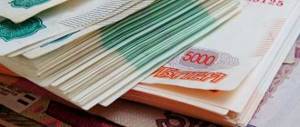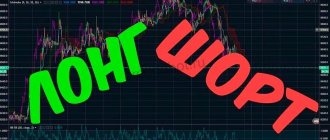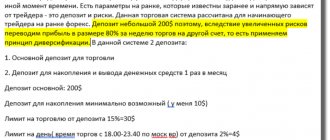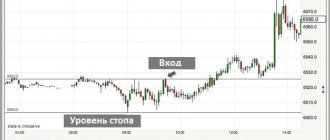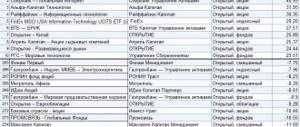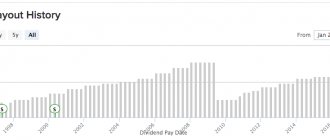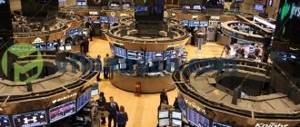Wherever there is money, profit or benefit, there is always the concept of risk. Even when choosing a job with more favorable conditions, we risk every day that the company will close or our services will no longer be in demand. As for investing, the rule always works here: The higher the profit, the greater the risk" Of course, there are instruments that are considered practically risk-free, such as bank deposits, for example, but even they will not save you from losses if the country declares a default.
Types of risks in Forex
The forex market is not as simple as it might seem at first. A trader faces many different dangers, which, with the proper approach, can be foreseen. However, as in any other business, it requires not only an understanding of the trading process, but also a thoughtful, competent approach to minimizing risks. Only three main groups can be noted: psychological, general, technical.
Risks in the foreign exchange market
A whole section in training, called risk management in Forex, deserves special mention. This is a set of measures that will allow you to competently manage your capital, prevent the loss of a significant part of your funds, and in general, will help you understand the essence of the right way to make money.
Each of the above groups of Forex risks consists of sections, which we will familiarize ourselves with further. Let's start with the most common and complex topic - psychological risks in Forex, namely typical mistakes and ways to avoid them. Since working in the foreign exchange market is directly related to money, the well-known phrase about learning from the mistakes of others, and not from your own, is relevant here as in no other place.
Method for assessing market risk. VaR (Value at Risk) risk measure. What is VaR?
In the 80s, a new risk criterion was proposed - VaR (Value at Risk) , which made it possible to comprehensively assess possible losses in the future with a selected probability and over a certain period of time. To calculate the VaR risk measure, several methods are used in practice:
- Historical modeling method (“delta normal”, “manual method”).
- Parametric model method.
- Statistical (simulation) modeling using the Monte Carlo method.
Psychological risks in Forex
When a trader first sees the scope of fluctuations and realizes what enormous amounts of money can be earned taking into account the broker’s leverage, he does not think at all that equally enormous amounts of money can also be lost. This is the first mistake that many newbies make. One of the foundations of risk management is determining not only the working lot, but also the maximum loss on the transaction. Ideally it looks like this:
- the entry and exit points of the trading system are determined, as well as the stop loss, all these values are expressed in points;
- The lot size is determined by choosing one of 2 options, which are considered basic in the risk management rules.
First way
comes down to the fact that we never, under any circumstances, use more than a certain percentage of available funds in trading. The calculation formula, which has been developed over the years, is quite simple. With a leverage of 1:100 and full use of the deposit, a point will cost conditionally 1% of the available funds, here we do not take into account the fact that in reality it will be a little less, because the margin is formed based on the exchange rate of the currency pair. Accordingly, with a leverage of 1:500, the value of the point will remain the same if you enter into a transaction with the same volume, but only now the margin will be 5 times less. To minimize Forex risks, you need to enter in such a size that it is enough for 1000-2000 points before the margin call.
I also recommend reading:
Support and resistance levels in trading. How to trade by levels?
Support and resistance in trading is one of the most common analytical tools, used in both binary trading and […]
Of course, you should only hold a position until the stop; we are talking exclusively about calculating points. In this case, we get the following situation: on a deposit of $1000, you can enter no more than 0.05-0.1 lots, that is, that same 5-10% of the amount. You just need to remember this simple calculation principle - divide the number of thousands of dollars by 10 or 20 and get the lot size. How much to take, 5 or 10 percent, is up to the trader to decide, but at the initial stage it is recommended to adhere to the minimum values. This will significantly reduce losses, which are difficult to avoid at the beginning of the exchange journey. But even successful traders with extensive experience rarely exceed this size. This is partly due to the fact that the forex market is much more volatile compared to others.
[adsp-pro-3]
Second way
is associated with the calculation of the loss itself. In this case, you will also have to do a little math. There is a stop loss value expressed in points. There are also sizes assumed by risk management - 1-2% of the deposit at risk for beginners and 2-5% for experienced ones. This means that to reduce risks in Forex, the working lot size is selected based on these parameters. For example, if we have $1000 on deposit and we want to enter a trade with a stop of 10 points, then using the above calculations we get a position size of 0.1-0.2 lots. But in the case of above 0.1 lot, we see a contradiction with another rule described earlier, since the order volume will exceed the permissible 5-10%.
Some might say that these are unreasonable restrictions, but this line of thinking usually occurs before the first flush. The market can change into a stable trend with strong jerks at any moment - the pound is a prime example of this. In this situation, slippage is possible, or, if a stop order is not set, then losses may increase. Therefore, it is very important to consider and take into account such risks in the foreign exchange market.
When there is a movement in the opposite direction for the trader, many begin to carry out averaging - the next very serious point, which in 95% of cases is the reason for losing the deposit. An uncontrolled increase in a losing position is the simplest martingale, which is not used at all as it should be. In this regard, it is necessary to strictly follow the rules.
simple conclusion follows - the trading system should be like a mechanism that works according to the rules and without any deviations from them, because risks in the Forex market are not asleep. When we test a strategy, we run it through history, where there is no doubt that transactions were closed too early or late, that is, everything happens according to the algorithm. And only in this case the results will be representative.
If psychology, fears, and greed interfere, then even the most effective system will not show the results it was designed for. As trivial as it may seem, a trader is often his own enemy, and his emotional state is one of the main Forex risks.
Forex risks of a psychological nature also include the following:
- Lack of confidence in yourself and your own strengths, focus on the opinions of other traders . Each trading system is unique; it can be built on well-known algorithms, but all parameters are determined by the trader himself. Simply taking and trading someone else’s idea is not the best option, since almost everyone when entering a trade has an understanding of what to do if something goes wrong. Someone else's trading system is in the dark, it is better to hone your skills on a demo account until you get a stable result.
- Overconfidence. If you manage to make a lot of money over a long period of time without making losses, some people begin to feel like professionals who understand the market. The result of such self-confidence is usually sad. It forces you to enter even dubious positions, neglect money management, and think that you can’t be wrong.
Excessive self-confidence ruined - Trading without any system or meaning . Entering the market for the reason “I think it will be this way and not otherwise” usually brings a negative result. Every transaction must be justified. This does not apply to people who have been watching charts for many years and can simply tell from one visual perception what will happen next. But for this you need to spend a lot of time at the terminal. There are indeed market patterns, but they are varied and there are many options for the development of the situation.
- Attempts to create an ideal trading system. There is a well-known expression - you shouldn’t fix something that already works. There are certain limits, having reached which you should stop and just let the system work and generate income. It is simply impossible to get 100% successful deals, otherwise we would already know about such billionaires. Any innovation in a working scheme should first be tested on a demo account, and not implemented immediately after the idea appears.
I also recommend reading:
The tweezers model in Forex. Description of how to trade?
Candlestick analysis contains a fairly large number of very diverse models, most of which are combinations of neighboring candles, ratios [...]
Using Beta to Measure Hedge Fund Performance
Beta is an important concept for hedge fund analysis. It can show the relationship between hedge fund returns and market returns. Beta can show how much risk a fund is taking on in certain asset classes and can be used to measure other metrics such as fixed income or even hedge fund indices. This measure can help investors determine how much capital to invest in a hedge fund, or whether they should keep their positions in the stock market or even in cash.
Technical risks in the foreign exchange market
You can undergo good training, gain a lot of knowledge and completely control yourself in trading, but there are aspects that do not depend on the trader - technical risks in the foreign exchange market. Almost each of them can be eliminated to one degree or another or at least minimized. The technical side of the issue is quite predictable; everything can be foreseen. So, the main difficulties of this type, which entail an increase in the risks of trading on forex:
- Unstable Internet connection. Losing the connection at the wrong moment can lead not only to missing a good entry, but also to the fact that you will not be able to close the deal manually, if this is provided for by the trading system. And if everything is more or less clear with closing - you need to set a stop, then in the case of a missed entry, nothing can be done, since many strategies imply just such trading. It is important to figure out what is causing the connection to break; it could be a general failure or a specific broker is cutting off the connection with the server. In the first case, you need to look for alternative access options, for example, a mobile terminal. In the second, you should see how often this happens and consider the option of changing the DC.
Connection to the trading server - Insufficient computer power. The system requirements for the terminals are very low, but these parameters are only required for it to function at all. If you open many tabs with graphs, there is a possibility of slowdowns, not entirely adequate display, and breaks. All this together can lead to an incorrect interpretation of what is happening, because price jerks with gaps occur only on strong news. The graph will then be loaded, but this will not cancel the failed login. Also, the presence of a large history in the charts greatly loads the computer; if you load historical data, the terminal can begin to consume a lot of memory, which negatively affects performance.
The ZUP indicator constantly calculates the relationships between waves for patterns. Many indicators carry out a large amount of calculations, especially if it is superimposed on many charts. For example, a popular scheme is using ZUP on all trading instruments. This leads to the fact that on the news, when local extremes are constantly updated, the load increases sharply, which provokes a decrease in the speed of work and, in particular, the execution of orders. There are quite a lot of similar indicators; as a rule, the load is given by those that deal with a large number of calculations and graphical display. To avoid getting into this situation, you need to either select a specific list of currency pairs for analysis, or upgrade your computer. - Power outage. This does not happen so often in large cities, but in smaller settlements it is far from uncommon. Such technical Forex risks cannot be excluded; they can lead to, for example, the termination of the trailing stop, since it requires a constant connection to the server. In this situation, the only way out is to use a laptop, which can be battery-powered, or a smartphone/tablet. In general, it probably makes sense to always have a phone at hand - a mobile application for trading is not at all demanding, has no problems from a technical point of view, is always at hand and at the same time has no trading restrictions - all order functionality is available.
The mobile terminal is also convenient for use in cases where there is no need to conduct serious analysis
As a result, it turns out that the optimal combination for completely minimizing risks in the foreign exchange market from the technical side is the presence of an independent communication channel in the form of a mobile terminal, as well as a laptop. At the moment, there are quite a lot of models offered that have sufficient performance and at the same time remain affordable. And the larger the deposit, the more relevant such a work scheme becomes, because the size of the potential loss may become incomparable with the costs of such equipment.
General Forex risks
In addition to the technical and psychological aspects, a trader can also lose money for other reasons. The environment always influences work; it is almost impossible to foresee everything. We also cannot exclude the human factor, relationships with other market participants, legislation and much more. We will highlight the main aspects and ways to reduce their impact on trading, and also list everything that does not depend on the trader, but can significantly change his work process and the final result. Of course, the easiest way is to find the culprit in someone other than yourself, but there are indeed moments with which nothing can be done.
So, the main risks from the general category in forex:
- Statements by dignitaries, press conferences, magazine articles and news. Only some of the above can be tracked; everything else can suddenly appear in the information field, provoking markets to respond. Recently, against the backdrop of the process of Britain's exit from the European Union, one can increasingly observe a strong reaction of the pound to anyone's statements from the government. Someone said something - and that’s it, a good stable trend suddenly reverses, and does so literally within a few minutes. That is, a fall that lasts all day can be leveled out in a few minutes. But in the news feed, everything comes late, that is, it turns out that it is impossible to foresee.
Oil's reaction to Trump's tweet about its high cost The second good example that shows the impact of individual comments is Trump's tweets. It’s a little simpler here, they usually appear at the beginning of the day in the United States, that is, Moscow time it will be 16-18 hours. At this time, you need to either monitor what Trump says in order to respond as quickly as possible, or exclude from trading at this time the instruments that most often suffer from such statements. For example, the US President very often talks about oil prices, which immediately react to this. Everything that is happening is nothing more than speculation, but only a newcomer to the market can be stunned by such movements.
The oil-dependent Canadian dollar reacts to Trump's tweet about its price. - Unscrupulous broker. Perhaps one of the main risks in the foreign exchange market, which can negate all the efforts of a trader. A broker working on the principle of a forex kitchen is not interested in the client making money. But it is very difficult to distinguish such a person, because advertising is ubiquitous, the information is not always true, and it is almost impossible to distinguish a real review from a paid one. Because of this, the likelihood of losing money increases significantly, especially if the idea of trading on the foreign exchange market was suggested by the company manager. To avoid getting into trouble, you need to:
— get acquainted with the history of the broker, evaluate its popularity on specialized resources;— view information about the duration of the site’s existence;
— check the availability of licenses, because even offshore companies must have them.
- Changing trading conditions. This is an absolutely normal phenomenon, but only when we are talking about an honest broker, as well as reasonable risk management. During certain periods of time, the broker may specifically change trading conditions for certain instruments due to a possible significant increase in volatility. This is done in order to prevent the client from receiving losses that exceed his deposit due to strong market fluctuations. However, for those who trade using hedging, that is, using locking strategies, such a change can bring a lot of losses.
An example of a notification about changes in trading conditions from Alpari
Let's sum it up
To be a successful trader, you need to fully understand the different types of risks you face and how those risks can affect your positions. Risk management is your main task as a trader. Many of the risks discussed in this article, when properly monitored and factored into your trading strategy, can help you protect and enhance the profitability of your trading portfolio.
However, many traders simply do not take into account any of the possible risks. The number of risks is quite large, but who said that a trader’s job is easy? All possible risks should be carefully monitored and considered as part of your trading plan.
